4 Types of Double Increases | Photo Tutorial
Double lifted increase, (k1, yo, k1) next st, knit front back front (kfbf), (k1, p1, k1) next st.
Double lifted increase, (k1, yo, k1) next st, knit front back front (kfbf), (k1, p1, k1) next st.
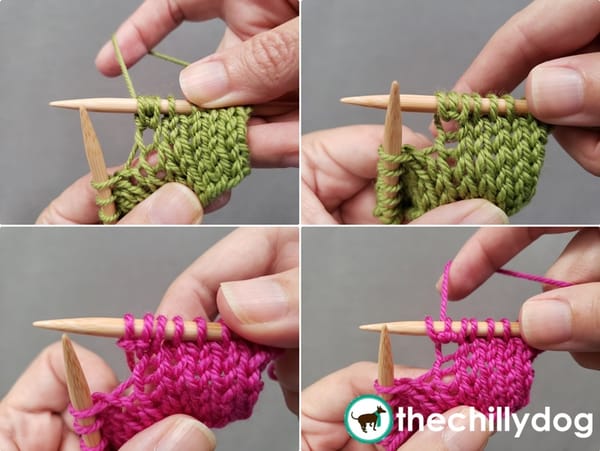
Let's finish off the Knit Increase Sampler Squares series with four types of double increases; double lifted increase, (k1, yo, k1) next st, knit front back front (kfbf), (k1, p1, k1) next st.
Pattern: Knit Inc Sampler Squares
Yarn: Ewe Ewe Yarns Wooly Worsted shown in colors 50-Pistachio and 10-Berry
Needles: skacel by addi Natura Bamboo US size 8 (5 mm) DPNs
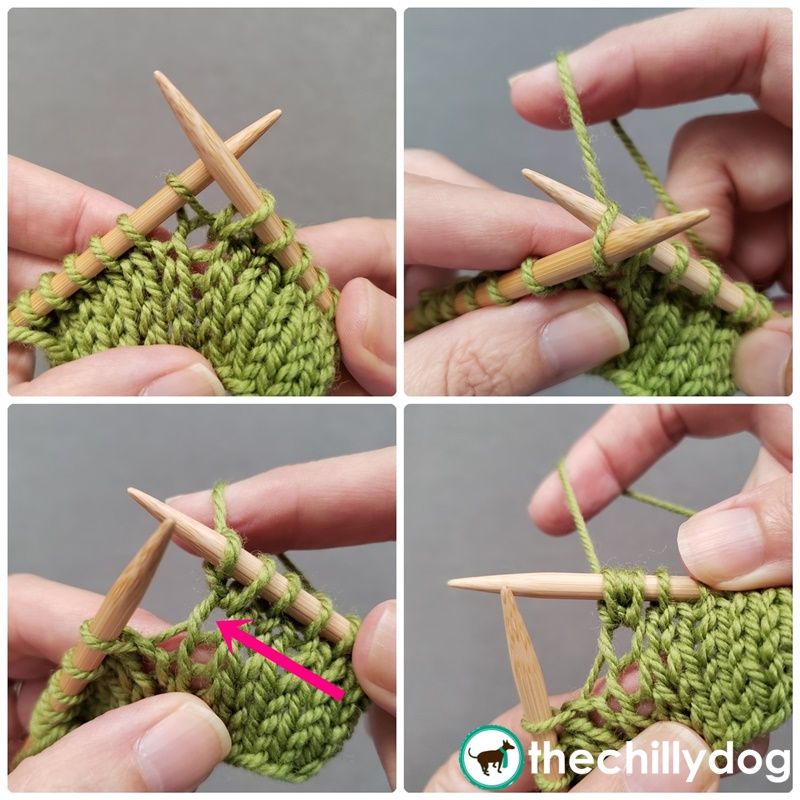
Knit one into the stitch below the first stitch on the left needle leaving the stitch on the left needle. Knit into the back loop/leg of the stitch on the left needle, dropping the stitch off the left needle. Locate where the first k1b was made and insert the right needle through the stitch from front to back. Knit one into the stitch below again.
Remember: The double lifted increase is created by knitting 1 below, 1 into the back loop/leg, and 1 below the next st. It can be abbreviated (k1b, kb1, k1b) next st.
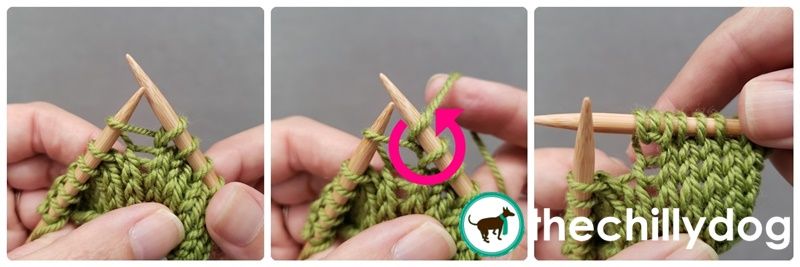
Knit one, leaving the stitch on the left needle. Bring the yarn forward and over the right needle. Knit one, dropping the stitch off the left needle.
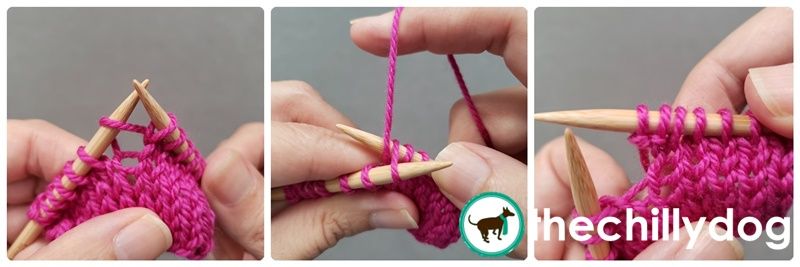
Knit one, leaving the stitch on the left needle. Knit into the back loop/leg, leaving the stitch on the left needle. Knit one, into the front loop/leg, dropping the stitch off the left needle.
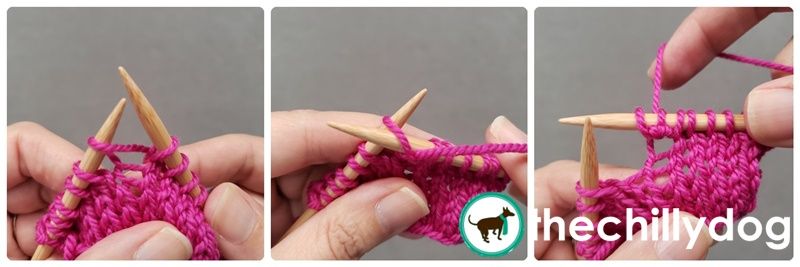
Knit one, leaving the stitch on the left needle. Bring the yarn forward between the needles and purl into the same stitch, leaving the stitch on the left needle. Bring the yarn back between the needles and knit into the same stitch, this time dropping it off the left needle.
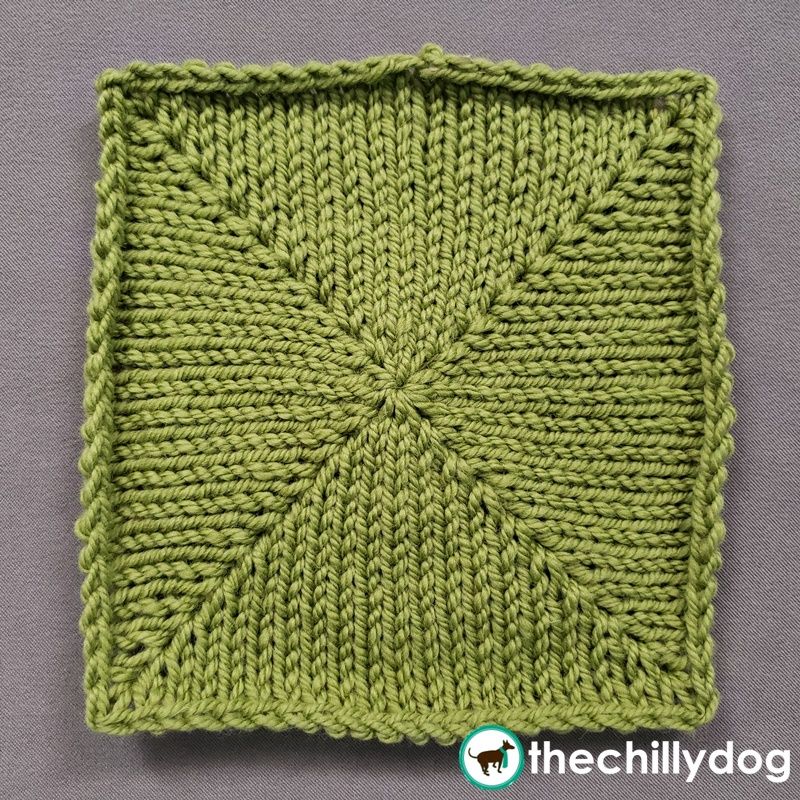
CO 12 using a Pinhole CO.
Rnd 1 and all odd Rnds: k all sts.
Rnd 2: [k1, (k1b, kb1, k1b) next st, k1] 4 times.
Rnd 4: [k2, (k1b, kb1, k1b) next st, k2] 4 times.
Rnd 6: [k3, (k1b, kb1, k1b) next st, k3] 4 times.
Rnd 8: [k4, (k1b, kb1, k1b) next st, k4] 4 times.
Rnd 10: [k5, (k1b, kb1, k1b) next st, k5] 4 times.
Rnd 12: [k6, (k1b, kb1, k1b) next st, k6] 4 times.
Rnd 14: [k7, (k1b, kb1, k1b) next st, k7] 4 times.
Rnd 16: [k8, (k1b, kb1, k1b) next st, k8] 4 times.
Rnd 18: [k9, (k1b, kb1, k1b) next st, k9] 4 times.
BO.
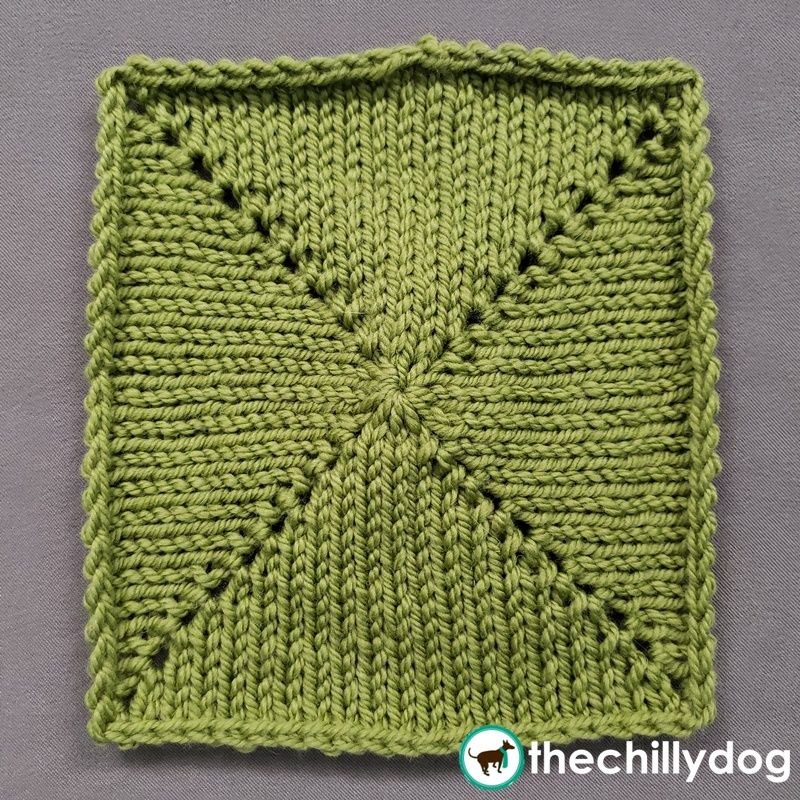
CO 12 using a Pinhole CO.
Rnd 1 and all odd Rnds: k all sts.
Rnd 2: [k1, (k1, yo, k1) next st, k1] 4 times.
Rnd 4: [k2, (k1, yo, k1) next st, k2] 4 times.
Rnd 6: [k3, (k1, yo, k1) next st, k3] 4 times.
Rnd 8: [k4, (k1, yo, k1) next st, k4] 4 times.
Rnd 10: [k5, (k1, yo, k1) next st, k5] 4 times.
Rnd 12: [k6, (k1, yo, k1) next st, k6] 4 times.
Rnd 14: [k7, (k1, yo, k1) next st, k7] 4 times.
Rnd 16: [k8, (k1, yo, k1) next st, k8] 4 times.
Rnd 18: [k9, (k1, yo, k1) next st, k9] 4 times.
BO.
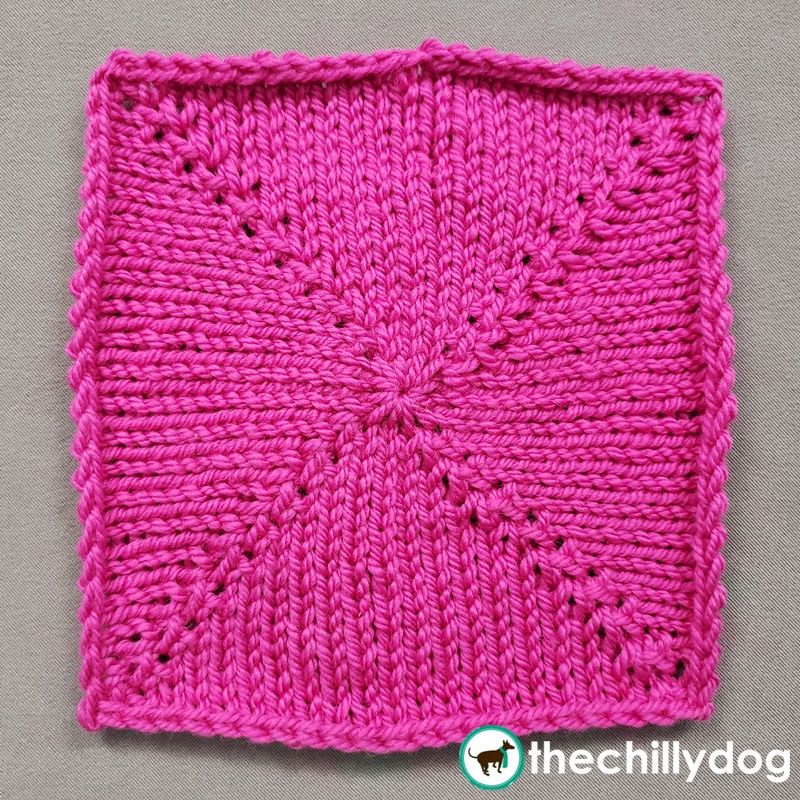
CO 12 using a Pinhole CO.
Rnd 1 and all odd Rnds: k all sts.
Rnd 2: [k1, kfbf, k1] 4 times.
Rnd 4: [k2, kfbf, k2] 4 times.
Rnd 6: [k3, kfbf, k3] 4 times.
Rnd 8: [k4, kfbf, k4] 4 times.
Rnd 10: [k5, kfbf, k5] 4 times.
Rnd 12: [k6, kfbf, k6] 4 times.
Rnd 14: [k7, kfbf, k7] 4 times.
Rnd 16: [k8, kfbf, k8] 4 times.
Rnd 18: [k9, kfbf, k9] 4 times.
BO.
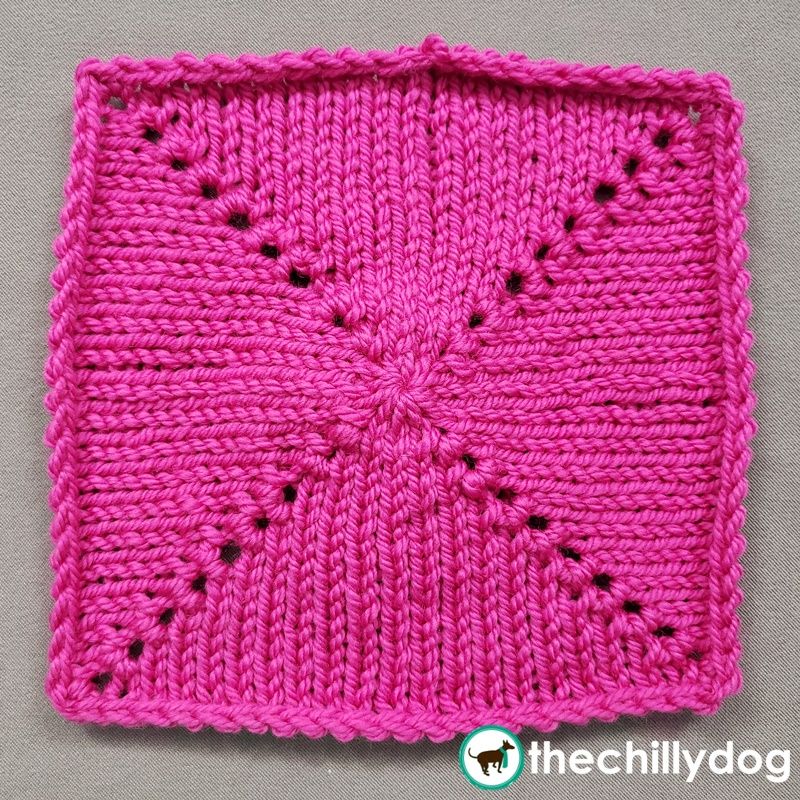
CO 12 using a Pinhole CO.
Rnd 1 and all odd Rnds: k all sts.
Rnd 2: [k1, (k1, p1, k1) next st, k1] 4 times.
Rnd 4: [k2, (k1, p1, k1) next st, k2] 4 times.
Rnd 6: [k3, (k1, p1, k1) next st, k3] 4 times.
Rnd 8: [k4, (k1, p1, k1) next st, k4] 4 times.
Rnd 10: [k5, (k1, p1, k1) next st, k5] 4 times.
Rnd 12: [k6, (k1, p1, k1) next st, k6] 4 times.
Rnd 14: [k7, (k1, p1, k1) next st, k7] 4 times.
Rnd 16: [k8, (k1, p1, k1) next st, k8] 4 times.
Rnd 18: [k9, (k1, p1, k1) next st, k9] 4 times.
BO.

